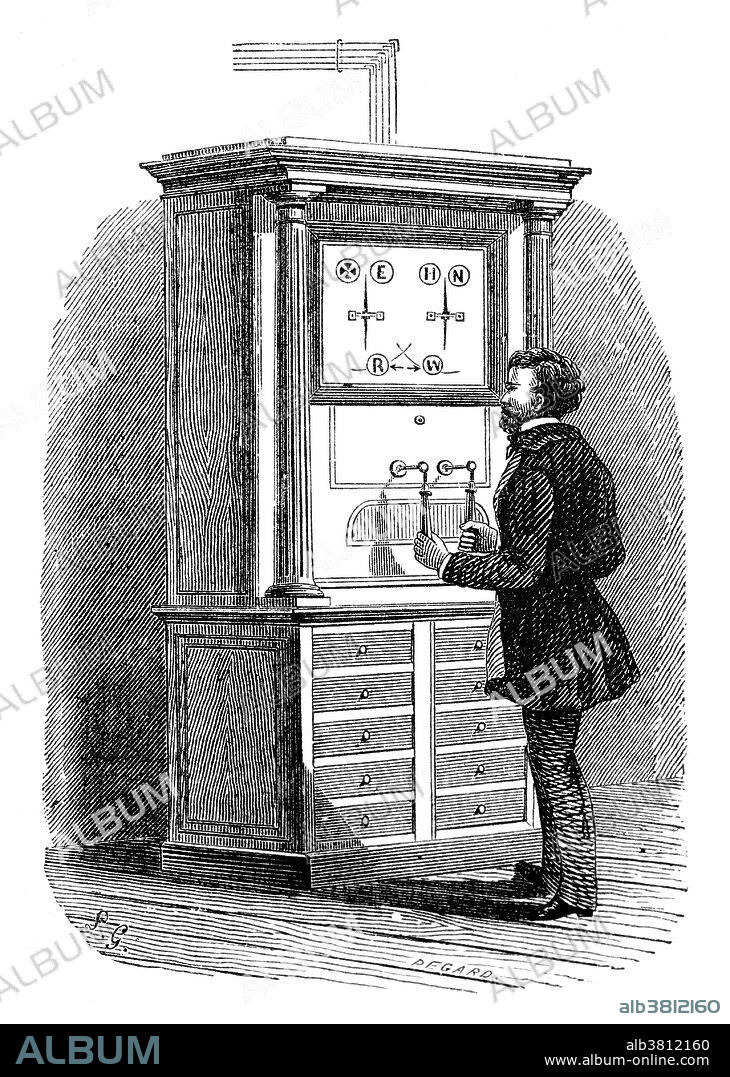alb3812160
Cooke and Wheatstone Two Needle Telegraph, 1830s

|
Add to another lightbox |
|
Add to another lightbox |



Title:
Cooke and Wheatstone Two Needle Telegraph, 1830s
Caption:
The Cooke and Wheatstone telegraph was an early electrical telegraph system invented by English inventors William Fothergill Cooke and Charles Wheatstone. The receiver consisted of a number of needles which could be moved by electromagnetic coils to point to letters on a board. This feature was liked by early users who were unwilling to learn codes, and employers who did not want to invest in staff training. The two-needle telegraph required three wires, one for each needle and a common return. The coding was somewhat different from the five-needle telegraph and needed to be learned, rather than read from a display. The needles could move to the left or right either one, two, or three times in quick succession, or a single time in both directions in quick succession. Either needle, or both together, could be moved. This gave a total of 24 codes, one of which was taken up by the stop code. Three letters were omitted: J, Q and Z, which were substituted
Personalities:
Credit:
Album / Science Source
Releases:
Model: No - Property: No
Rights questions?
Rights questions?
Image size:
3100 x 4350 px | 38.6 MB
Print size:
26.2 x 36.8 cm | 10.3 x 14.5 in (300 dpi)
Keywords:
1830S • 19TH CENTURY • 19TH • AND • ART • ARTWORK • CELEBRITY • CENTURY • CHARLES • COMMUNICATION • COOKE • DRAWING • ELECTRIC • ELECTRICAL • ELECTRICITY • ENGLISH • ENGRAVING • EUROPEA • EUROPEAN • FAMOUS • FIGUIER • FOTHERGILL • GRANDES • GREAT • HISTORIC • HISTORICAL • HISTORY • ILLUSTRATION • IMPORTANT • INVENTION • INVENTIONS • LÈS • LOUIS • MASS • NEEDLE • NOTABLE • SCIENCE • SIGNALS • SPIRE • SYSTEM • TECHNOLOGICAL • TECHNOLOGY • TELE-COMMUNICATION • TELECOMMUNICATION • TELEGRAPH • TELEGRAPHY • TWO • TWO-NEEDLE • WELL-KNOWN • WHEATSTONE • WILLIAM
 Pinterest
Pinterest Twitter
Twitter Facebook
Facebook Copy link
Copy link Email
Email

